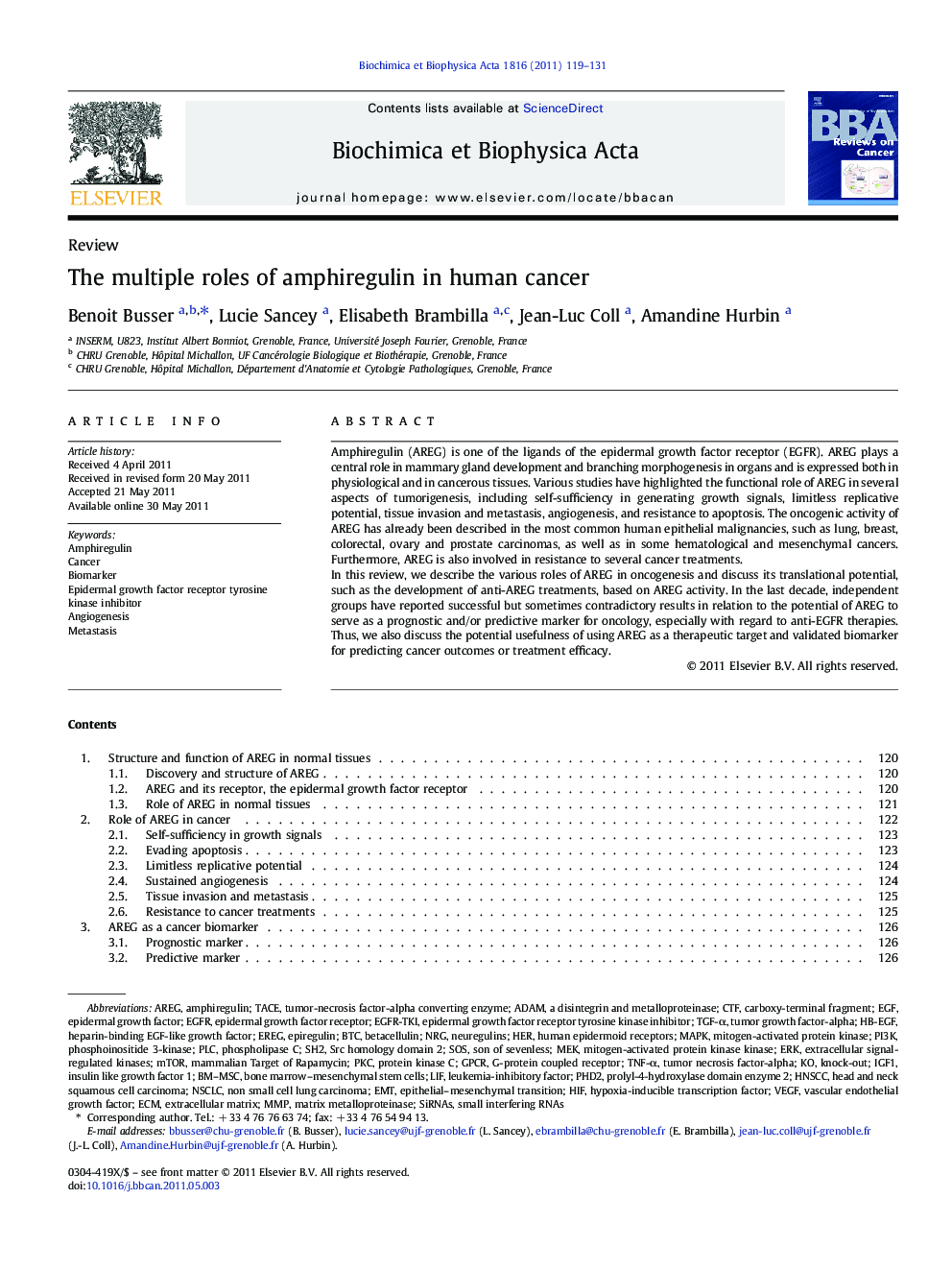| Article ID | Journal | Published Year | Pages | File Type |
|---|---|---|---|---|
| 8429474 | Biochimica et Biophysica Acta (BBA) - Reviews on Cancer | 2011 | 13 Pages |
Abstract
In this review, we describe the various roles of AREG in oncogenesis and discuss its translational potential, such as the development of anti-AREG treatments, based on AREG activity. In the last decade, independent groups have reported successful but sometimes contradictory results in relation to the potential of AREG to serve as a prognostic and/or predictive marker for oncology, especially with regard to anti-EGFR therapies. Thus, we also discuss the potential usefulness of using AREG as a therapeutic target and validated biomarker for predicting cancer outcomes or treatment efficacy.
Keywords
Tgf-αmTORBTCPHD2HNSCCsiRNAsGPCRPLCSH2ERKPKCSOSCTFHIFHB-EGFEGFR-TKITACEAREGEGFRPI3KMMPLIFEGFEREGleukemia-inhibitory factorECMNRGNeuregulinsEpiregulinG-protein coupled receptorIgf1MAPKsmall interfering RNAsADAMamphiregulinAngiogenesisHERBetacellulinBiomarkera disintegrin and metalloproteinasetumor necrosis factor-alphaEMTSrc homology domain 2CancerNSCLCInsulin like growth factor 1epidermal growth factorhypoxia-inducible transcription factorVascular endothelial growth factorVascular Endothelial Growth Factor (VEGF)Heparin-binding EGF-like growth factorTNF-αphospholipase Cphosphoinositide 3-kinaseExtracellular matrixmatrix metalloproteinaseMetastasisMEKEpidermal growth factor receptor tyrosine kinase inhibitorknock-outmammalian target of rapamycinProtein kinase Cmitogen-activated protein kinasemitogen-activated protein kinase kinaseson of sevenlessNon small cell lung carcinomaHead and neck squamous cell carcinomaextracellular signal-regulated kinasesEpithelial–mesenchymal transitionEpidermal growth factor receptor
Related Topics
Life Sciences
Biochemistry, Genetics and Molecular Biology
Cancer Research
Authors
Benoit Busser, Lucie Sancey, Elisabeth Brambilla, Jean-Luc Coll, Amandine Hurbin,
